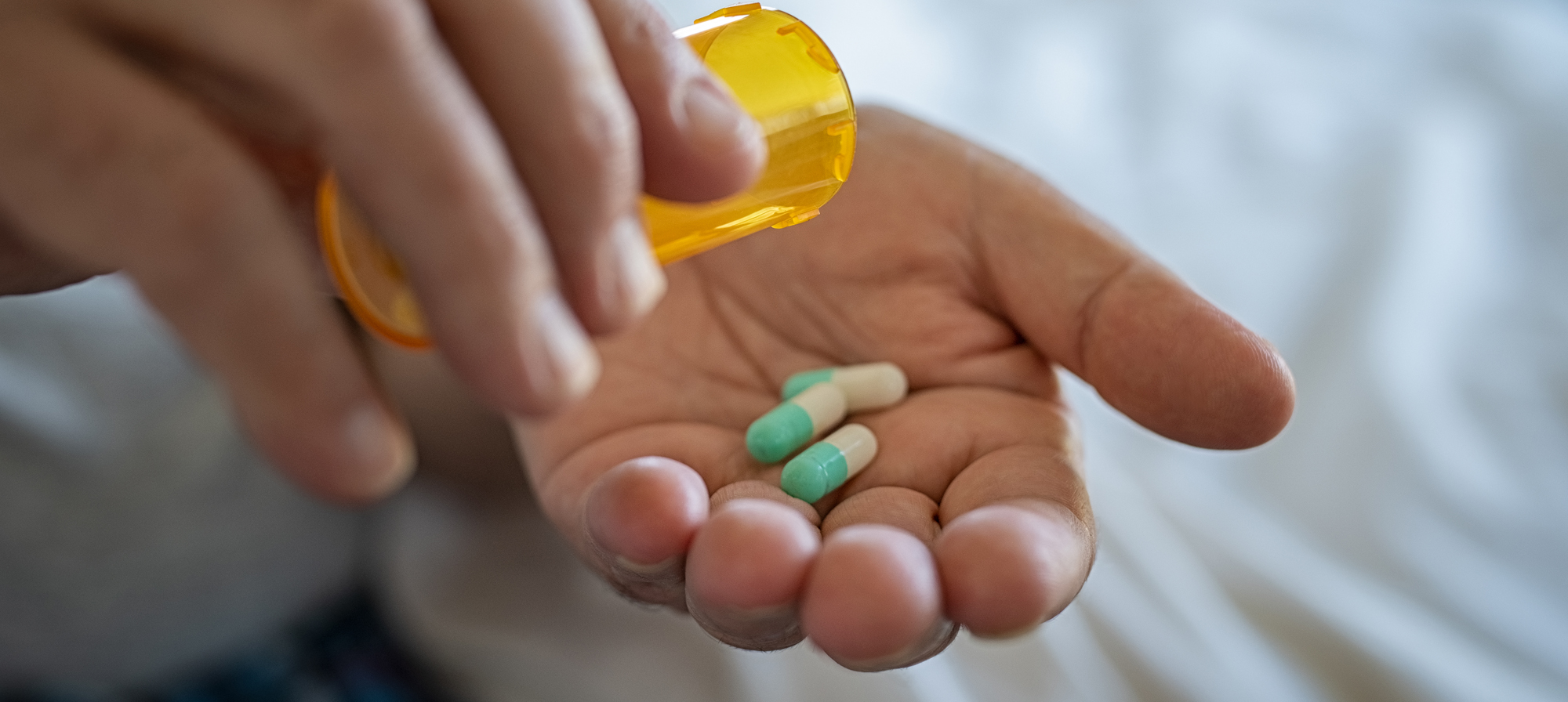Do you know which medicines can raise your fall risk? And if you take them, what can you do about it?
When you head down a flight of stairs, does the thought of falling cross your mind? It’s a common fear—and for good reason. Falls are a leading cause of injury in adults 65 and older. And unfortunately, one slip or fall can change everything.
You don’t have to live in fear of a misstep. You can take some control over your fall risk. The first step is eliminating or changing things that can put you at risk. Some are not too hard to spot: loose rugs, clutter in walkways, dim lighting over stairways, and slippery bathtubs.
But what about medicines?
How do medicines affect fall risk?
Medicines can raise your risk of falling for a number of reasons. Some can have side effects like dizziness or light-headedness. Some can affect your eyesight. To complicate matters, as you age, your body can become more (or less) sensitive to meds, even those you’ve taken for a long time without issue. And the more medicines you take, the higher your risk of falling.
Medicines most likely to raise the risk of falling
The medicines most likely to lead to falls are ones that cause drowsiness or confusion.
They include:
- Sedatives and sleep medicines such as zolpidem (Ambien®) and zaleplon (Sonata®)
- Anti-anxiety drugs (benzodiazepines such as lorazepam (Ativan®) and diazepam (Valium®))
- Neuroleptics (sometimes referred to as antipsychotics such as olanzapine (Zyprexa®), clozapine, and risperidone)
- Anticonvulsants such as gabapentin (Neurontin®), pregabalin (Lyrica®) and carbamazepine
- Antidepressants such as amitriptyline, sertraline (Zoloft®)
- Opioids such as OxyContin® and Vicodin®
- Muscle relaxants such as Flexeril® and Amrix®
- Sedating antihistamines (allergy drugs) such as Benadryl® or chlorpheniramine
 Other medicines can increase the risk of falls in other ways. For example, they can cause changes in blood pressure, blood sugar, or eyesight. These include:
Other medicines can increase the risk of falls in other ways. For example, they can cause changes in blood pressure, blood sugar, or eyesight. These include:
- Blood pressure and heart medicines
- High blood sugar medicines
- Medicines for an overactive bladder such as oxybutynin or tolterodine
- Medicines in the anticholinergic class, such as Benadryl® and meclizine (Dramamine® Less Drowsy and Antivert®)
 Next steps you can take
Next steps you can take
If you think your medicines may be making you unsteady, go over your medicine list with your doctor. Are there any medicines that you no longer need? It could be that the risks and side effects of a medication are greater than the benefits. Sometimes a lower dose may be enough and may not affect your balance. Changing the time of day that you take the medicine can help. Or another drug less likely to affect your balance may work just as well.
Do not change your dose or stop your medicine until you talk with your doctor. Your pharmacist can also help.
 Ask about non-drug ways to deal with health issues
Ask about non-drug ways to deal with health issues
Another course of action is to talk with your doctor about other ways to handle a health issue. For instance, you could try relaxation exercises instead of taking an anti-anxiety drug. You could work on sleep habits instead of taking a pill to help you sleep. Just be sure to check with your doctor before you stop taking any drug.
You can find more tips to lower your risk for falls here .
Not a Silver&Fit® member? Learn more about everything the program has to offer, including more helpful healthy living tips like this, here on our website.
This information is not intended to take the place of regular medical care or advice. Please check with your doctor before using this information or beginning any self-care program. Images used for this article do not depict any members of the Silver&Fit program.
References
American Geriatrics Society Beers Criteria® Update Expert Panel (2023). American Geriatrics Society 2023 updated AGS Beers Criteria® for potentially inappropriate medication use in older adults. Journal of the American Geriatrics Society, 71(7), 2052–2081. https://doi.org/10.1111/jgs.18372
Centers for Disease Control and Prevention. (2024, May 14). About older adult fall prevention. https://www.cdc.gov/falls/about/index.html
Mayo Clinic. (2024, June 14). Fall prevention: Simple tips to prevents falls. https://www.mayoclinic.org/healthy-lifestyle/healthy-aging/in-depth/fall-prevention/art-20047358
Park, H., Satoh, H., Miki, A., Urethra, H., & Sawada, Y. (2015). Medications associated with falls in older people: Systematic review of publications from a recent 5-year period. European Journal of Clinical Pharmacology, 71(12), 1429-1440. https://pubmed.ncbi.nlm.nih.gov/26407688/
Steinman, M. A., & Fick, D. M. (2019). Using wisely: A reminder on the proper use of the American Geriatrics Society Beers Criteria. Journal of the American Geriatrics Society, 67(4), 644-646. https://pubmed.ncbi.nlm.nih.gov/30693954/
This article was written by Sharon Odegaard; edited by Candace Hodges; and clinically reviewed
by Rebecca Potter, PharmD, on September 13, 2024.





